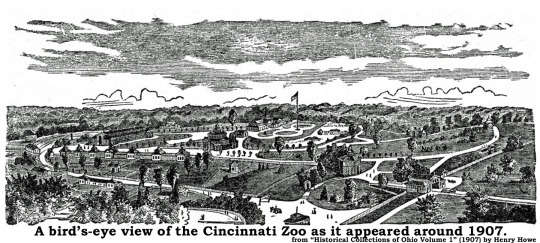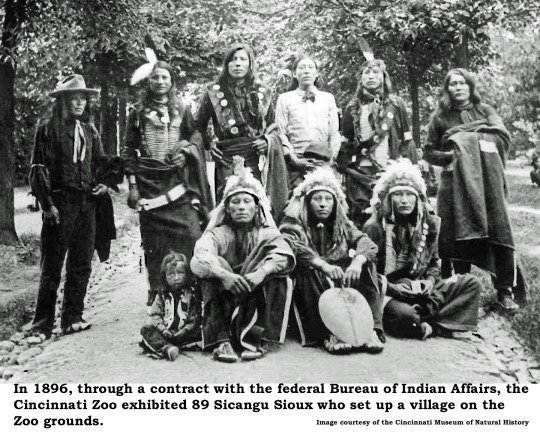#Trumpeter hornbill
Text
Trumpeter Hornbill
Found On: TikToc
No Sound
8 notes
·
View notes
Photo

初めてみるサイチョウ!ここはオオサイチョウもツノもギンガオもミナミジもいてすごい
鳥インフルエンザの影響であまり見られないようになってますが、、
早くこの病気が終息することを祈っています。
@埼玉県こども動物自然公園
It was my first time seeing this species of hornbill. They have red faces around their eyes.
There are also ‘Great hornbill’, ‘Rhinoceros’, ‘Silvery-cheeked’, and ‘Southern Ground’ here. It was so great!
But due to bird flu we can’t watch all of the wonderful bird’s house right now.
I pray that this disease will end soon.
@Saitama children's Zoo Park
8 notes
·
View notes
Text









Trumpeter Hornbill | Binder Park Zoo | 2019
1 note
·
View note
Text

Trumpeter Hornbill (Bycanistes bucinator), family Bucerotidae, found in forests of central and southern Africa
photograph by Eric Kilby
263 notes
·
View notes
Text
Unveiling the Wonders of Amboseli National Park: A Traveler's Guide
Amboseli National Park, a jewel of Kenya adorned by the majestic Mount Kilimanjaro, beckons adventure seekers and nature enthusiasts alike.

This park, named after a Maasai word for "salty dust," offers breathtaking landscapes teeming with wildlife. From iconic herds of elephants to graceful zebras grazing on the savannas, Amboseli promises an unforgettable encounter with the untamed beauty of Africa. This guide equips you with the knowledge to plan a thrilling and enriching visit, focusing on the top 5 activities that will leave you with lasting memories.
Top 5 Activities in Amboseli National Park:
1. Unveiling Wildlife through Game Drives:
Morning Game Drives: As the sun paints the African sky with vibrant hues, embark on a thrilling game drive in a customized vehicle. Experienced guides will lead you to prime wildlife viewing locations, where you might witness majestic elephants trumpeting their greetings, lions lounging in the golden light, cheetahs embarking on a hunt, and zebras grazing in vast herds. Be on the lookout for giraffes browsing on acacia trees, playful baboons, and a variety of antelopes.

Sunset Game Drives: As the day draws to a close, witness the transformation of the savanna bathed in the warm glow of the setting sun. Predators like lions and hyenas may become more active, while nocturnal creatures begin to emerge. The changing light offers unique photographic opportunities, capturing the silhouette of wildlife against the fiery sky.
2. Lion Tracking: An Unforgettable Adventure:
Embark on a unique adventure with experienced trackers, following the fresh trails of a pride of lions. Learn about lion behavior, their social structure, and hunting techniques. Spotting these magnificent predators in their natural habitat, stalking their prey or lazing in the shade, is an experience that will stay with you forever. Remember, safety is paramount. Always follow your guide's instructions and maintain a safe distance from the animals.
3. A Paradise for Birdwatchers:
With over 400 bird species recorded, Amboseli National Park is a haven for bird enthusiasts. Keep your binoculars handy as you might spot majestic eagles soaring on thermals, colorful flamingos gracing the wetlands with their pink plumage, and vibrant secretarybirds stalking their prey in the tall grasses. Watch out for hornbills with their impressive casques, elegant cranes performing their mating dances, and a dazzling array of smaller songbirds flitting amongst the acacia trees.

4. Immerse Yourself in Culture: Maasai Village Visits
Get a glimpse into the rich traditions of the Maasai people, the indigenous custodians of these lands for centuries. Respectful visits to a Maasai village offer the opportunity to learn about their way of life, their cultural practices, and their deep connection to the environment. Witness traditional dances, demonstrations of beadwork and craft-making, and gain insights into their semi-nomadic lifestyle.
5. Unveiling the Ecosystem: Guided Nature Walks
Lace up your hiking boots and explore the diverse landscapes of Amboseli National Park on a guided nature walk. Experienced guides will point out the smaller wonders often missed on game drives. Learn about the park's unique flora and fauna, the delicate balance of the ecosystem, and the vital role each creature plays. Spot insects, reptiles, and shy mammals that might be hiding in the undergrowth. Guided nature walks offer a deeper appreciation for the intricate tapestry of life within Amboseli.

Conclusion: A Journey to Remember
Amboseli National Park offers more than just breathtaking scenery. It's a place where you can witness nature's grandeur, encounter magnificent wildlife, and gain a deeper understanding of the Maasai culture. By choosing these top 5 activities, you'll ensure a well-rounded and unforgettable experience in this captivating corner of Africa. So pack your bags, embrace the spirit of adventure, and get ready to create lasting memories in Amboseli National Park!
#ugandian knuckles#wild animals#tourist#the eras tour#tourism#tour#Adventure#photography#beach#safari#africa#Nairobi#Uganda#Kenya#Masai Mara#beaches#Wanderlust#east africa#Travel Photography#travel blog#tanzania#tanned#zanzibar#tangled#tanzanite#kenyan#kenya moore#beachlife#Kenya Safari#travel
0 notes
Text
“that thing is sooo stressed it’s picking at itself like crazy” <- guy pointing at a perfectly healthy trumpeter hornbill with the fullest, glossiest plumage i’ve ever seen that just so happens to be preening right now
1 note
·
View note
Text
0 notes
Text
Ostrich and Lark
Marilyn Nelson
Ostrich and Lark started each morning together
at first light,
day in and day out.
And they parted
at nightfall.
Every day they nibbled an ongoing meal:
a few seeds here,
a few seeds there;
for Ostrich, the occasional lizard.
All day the sun glared out of cloudless blue.
Every day, all day,
over the cidada’s drone,
a drizzle of buzzings fell,
and a downpour of birdsong.
Hornbill, Bee-eater, Hoopoe, Diederik,
Mousebird, Whydah, Canary:
from gray-light-come to last-light-gone,
the fancy-dressed suitors of the veld
warbled their rain-shower jazz.
But Ostrich was silent.
Lark sang the first song of the day,
perched tall, slender, the tawny brown
on a termite castle
or a low branch of a camel thorn tree.
But Ostrich was silent.
When Lark sang,
he flickered his wings,
and his white throat feathers trembled.
All day Lark sang, standing still or flitting,
his open wings vermillion-spangled.
But Ostrich was silent.
At dusk Lark sought his hidden nest on the ground.
Ostrich sat down
under an acacia tree
and tucked his head
under one of his black-and-white wings.
Sometimes he dreamed of flying.
Sometimes he dreamed of singing the sky full of stars.
Sometimes he dreamed
of the green season, drinking
caught water, and drinking, and drinking.
At first light, Lark called,
and together they started their day.
One evening,
as the great red sun
sank toward the tree-spiked horizon
and the birds swooped to their nests;
as the plant eaters gathered at full alert
and the meat eaters woke to prowl;
as the gates of night opened to the dark,
Ostrich fluttered his billowy wings.
He stretched his graceful neck,
closed his eyes, and
TWOO-WOO-WOOOT
Ostrich found his voice,
a voice part lion’s roar,
part foghorn,
part old man trumpeting into his handkerchief.
Ostrich was booming!
Which is what ostriches do.
The veld fell silent.
And Ostrich boomed like thunderheads on the horizon.
Ostrich boomed like the rainstorm that ends
the dusty months of thirst.
Ostrich boomed like the promise
of jubilant green, like the promise of birth.
Ostrich boomed Lark right off his perch!
Lark flew up to an
Ostrich-high branch
and looked at his friend
with a big WOW in his eyes.
Ostrich had found his voice at last,
his own beauty,
his big, terrific self.
0 notes
Photo

Inktober 2018-22 : Elephants (Les racines du ciel) by jainas
Here’s an Inktober drawing someone did of a big packy trumpeting during sunrise, with a baby packy standing close by, & a hornbill/toucan on its back (it’s hard to tell what kind of bird that is).
Picture found here.
#elephants#art#drawing#ink#Inktober#big#trumpet#sunrise#baby#close#hornbill#toucan#back#hard#tell#bird
3 notes
·
View notes
Text

Portrait of a male Wreathed hornbill.
The Wreathed hornbill (Rhyticeros undulatus) is a species of hornbill native to forests in northeast India, Bhutan, mainland Southeast Asia and the Greater Sundas in Indonesia. They are large birds with males being larger than females. Both sexes are black with long snow-white tails and a red-colored bare patch of skin around the eyes. They possess a long, heavy dull white bill with a casque of low wreathes across the base of the upper mandible. The male is distinguished by his white face and neck, and yellow throat pouch while the female has a blue throat pouch. The Wreathed hornbill has a loud hoarse trumpeting croak, often heard while in flight. Its diet consists mainly of fruits but the male may occasionally hunt small animals such as bats, frogs, reptiles, crabs and insects to bring back to the brooding female and chicks in the nest.
📷 Rianti Ape ( yanti)
19 notes
·
View notes
Text
drove up the coast yesterday to one of the indigenous scarp forests! had aimed to see bronze-naped pigeon, lemon dove, grey cuckooshrike, green twinspot and green malkoha, but was only able to tick off the grey cuckooshrike. had a nice sighting in the picnic site, and then again later at the top of the boardwalk on our second walk through. honestly we heard way more than we saw
saw white-eared barbet, grey cuckooshrike (!!! new tick!), red-eyed dove, fork-tailed + square-tailed drongo, crowned eagle soaring overhead, spotted ground-thrush (!!! rare and endangered), trumpeter + crowned hornbill, black-backed puffback, chorister robin-chat, narina trogon (just a glimpse but !!!!), forest weaver, collared + greater double collared + olive + grey sunbird. heard calls from grey-headed bush-shrike, gymnogene, scaly-throated honeyguide, sombre + yellow-bellied greenbul, bar-throated + yellow-breasted apalis, and possibly a croaking cisticola
#i really need to keep my phone at hand to record calls or at the very least buy a designated recorder#on birds#diary
4 notes
·
View notes
Photo

These dashing Trumpeter Hornbills are here to herald the long weekend ahead! Stay warm!
This illustration is from Daniel Giraud Elliot's A Monograph of the Bucerotidae, or Family of the Hornbills. (London, 1882)
#hornbills#tgif#scientific illustration#birds#ornithology#illustratedbooks#rarebooks#SpecialCollections
106 notes
·
View notes
Text


A dream piece of mine.
African Trumpeter Hornbill
106 notes
·
View notes
Text
13 Curious Facts About Our Cincinnati Zoo

Blame The Caterpillars
In 1872, caterpillars infested Cincinnati trees to such an extent that Andrew Erkenbrecher, a wealthy local miller, formed the Society for the Acclimatization of Birds to import caterpillar-feasting species. Flushed with success after acquiring more than 1,000 birds, the Society developed plans for Cincinnati’s Zoological Gardens to house the imported birds that could not survive in the wild here. Erkenbrecher is largely responsible for Cincinnati’s starlings and English sparrows.
For-Profit, In Theory
The Cincinnati Zoo was originally organized as a for-profit enterprise, but it never turned much of a profit. The lingering effects of the financial Panic of 1873, compounded by a smallpox epidemic and poor weather resulted in deficits throughout the first decade. In 1885, Zoo directors considered a total shutdown, including selling off all the animals. Eventually, the Zoo reorganized as a not-for-profit corporation, with the City of Cincinnati owning the land..
Walking Into A Job
Sol Stephan arrived at the Cincinnati Zoo in 1875 to deliver a bull African elephant named Conqueror. Although opening day was rapidly approaching, the Zoo was still under construction and no one knew how to take care of an elephant. Stephan was asked to stick around for a couple of days. He stayed for 62 years, rising to become the legendary superintendent and general manager.

Humans On Display
In addition to animals, the Zoo secured 89 Sioux through a contract with the federal Bureau of Indian Affairs. The Native Americans, on display for three months in 1896, set up a village within the Zoo and lived, according to advertisements, their normal life, giving "a rare opportunity of showing the character and mode of life of the Indian tribes." The foray into human exhibits was a financial failure, but Zoo officials hailed it, from an educational perspective, as "an incalculable success."
Going To The Dogs
In its early days, the Zoo displayed a variety of dogs. On opening day, visitors saw a Newfoundland, two mastiffs, poodles, “Danish hounds” (Great Danes) and greyhounds. Some were trained performers, but others merely illustrated uncommon breeds. Interested observers could purchase dogs from the Zoo. St. Bernard dogs were advertised as “docile . . . but a terror to tramps and evil-doers.”
Old Hornbill
When a Cincinnati newspaper visited the Zoo in 1909, only one of the animals on display when the Zoo first opened in 1875 was still alive. It was an African Hornbill. The old bird survived more than 33 years in captivity and outlived every other specimen that originally populated the Zoo’s cages.
Pat McAvoy, Lion Slayer
During its first year of operation, two large carnivores escaped the Zoo. Both were shot and killed by Pat McAvoy, a building contractor who served as Clifton Town Marshal. In March 1875, while the Zoo was still under construction, a lioness escaped, killed a donkey and attacked a night watchman before McAvoy shot it. In September of that year, a leopard got loose and prowled Burnet Woods for several days before McAvoy tracked and killed it. The Cincinnati Daily Times [30 September 1875] quipped: “It is said that the Zoological Society consists of two persons, Andrew Erkenbrecker and McAvoy. The former furnishes the game for the latter to shoot.”
Firing Squad For An Elephant
In December 1890, the Cincinnati Zoo brought in a firing squad to execute a cantankerous elephant named Old Chief. Retired from the Robinson Circus where he had killed his keeper, Chief’s tantrums threatened nearby animals – not to mention Zoo personnel – and Zoo directors signed his death warrant. A single marksman proved unable to bring down the elephant, so the Zoo recruited a squad of four, who fired multiple volleys until the great beast finally succumbed. The Palace Hotel served elephant steaks that night. Chief’s skeleton and skin were displayed at the Zoo for years and then donated to the University of Cincinnati.

Bloody Butchers’ Day
During the 1890s, as part of the annual Butchers’ Day at the Zoo, local meat cutters competed to determine who could kill, skin and dress a bull of no less than 1,400 pounds. Although the animals were killed on stage, a curtain was closed at the fatal moment, but drawn back to provide a clear view of beheading, skinning and dressing the fresh beef. The animal contestants were served at a grand barbecue later in the day.
Dinnertime Delight
In years past, a top attraction at the Cincinnati Zoo was watching living lunch fed to ravenous beasts. While the big carnivores usually got great joints of butchered beef or pork, the snakes and reptiles were served live rabbits, rats or squirrels. Spectators enjoyed watching the hungry snake attack and kill its meal. So popular was feeding time that the Zoo published the schedule in their advertisements.
In The Ring
Throughout the 1940s, the Zoo entertained visitors by pitting trainer Howland Kirby against Rodney the kangaroo. Although the Zoo claimed the boxing matches “relaxed” Rodney, and that Rodney eagerly anticipated these bouts with his trainer, public outcry eventually ended the pugilistic routine.
Sopranos Pull Rank
For half a century, the Cincinnati Zoo was home to Cincinnati’s Summer Opera. At times, the on-stage artists harmonized with screeching peacocks and trumpeting elephants. The accommodations were nothing like The Met – performers had to dress and make up in a small village of tents near the stage, except for the star soprano. She was assigned the only dressing room in the building.
April Fools Abound
For years, the telephone at the Cincinnati Zoo rang off the hook on the first day of April. A standard April Fools prank involved leaving a phone message asking the victim to return a call to Mr. Baehr, Mr. Lyon, Mr. Wolf or Mr. Fox. While the perpetrator enjoyed boffo yucks, the Zoo’s receptionist dreaded the annual ordeal. In recent years, with almost-universal caller identification, the gag has lost its luster.
14 notes
·
View notes
Text
Trumpeter hornbill (Bycanistes bucinator)
Not the best video, but really enjoyed watching this bird. Absolutely amazing.
#safari#wildlifephotography#nature#underafricanskies#wildlife#buyelaeafrica#thisisafrica#fieldguide#conservation#facts#birdingphotography#birds nature
2 notes
·
View notes
Note
bird rec? Trumpeter Hornbill - 🦆 anon
their beaks look like they're made out of wood, i would love to write a little story about these because of that........
1 note
·
View note